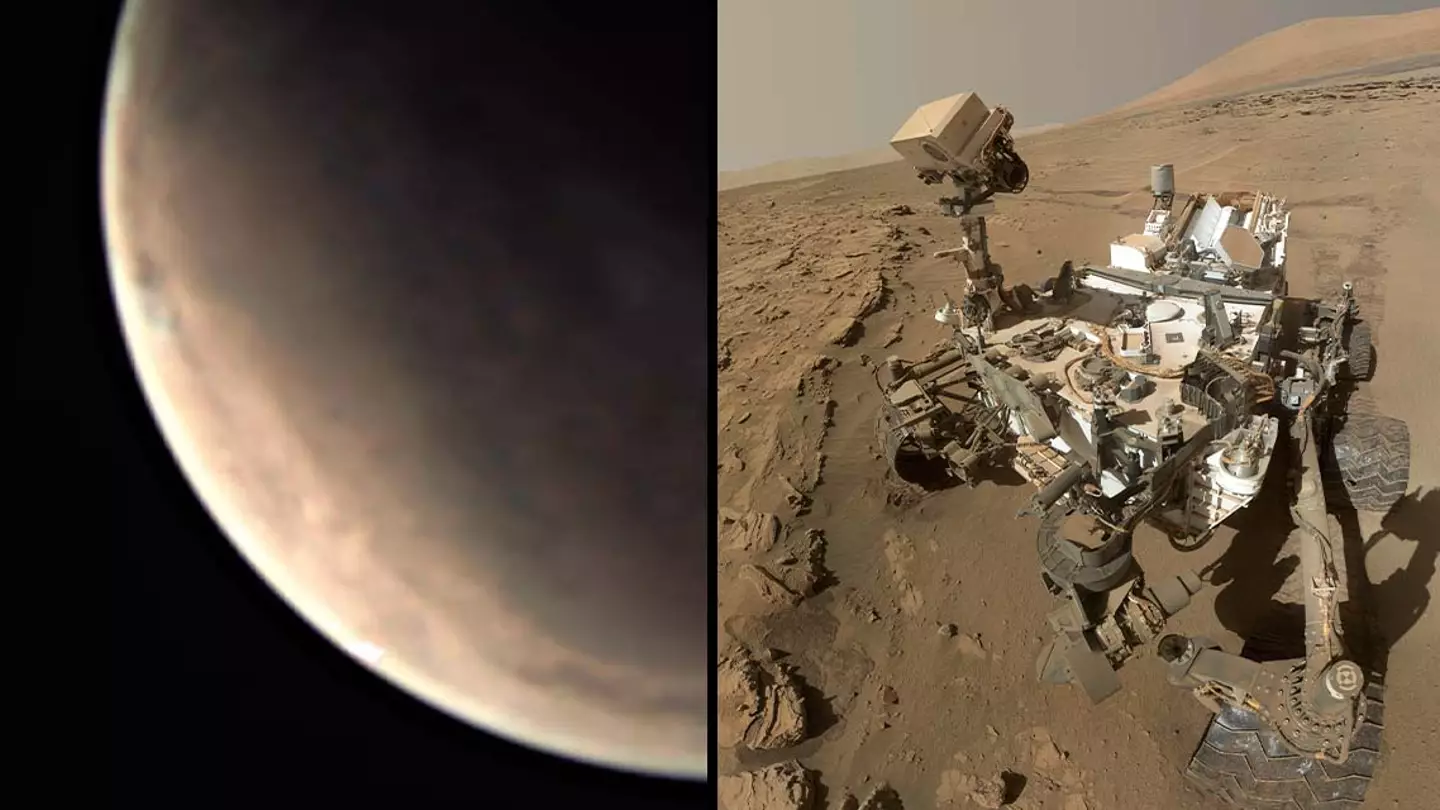
Earthlings have been able to watch a live stream from Mars for the very first time today.
While we all wait for the first human beings to step foot on the Red Planet in the near future, the European Space Agency (ESA) has given all of us a chance to have sneak peek at Mars today.
Because all the images we’ve seen from Mars were taken in the past – usually days or weeks before we see them – today’s stream is truly groundbreaking.
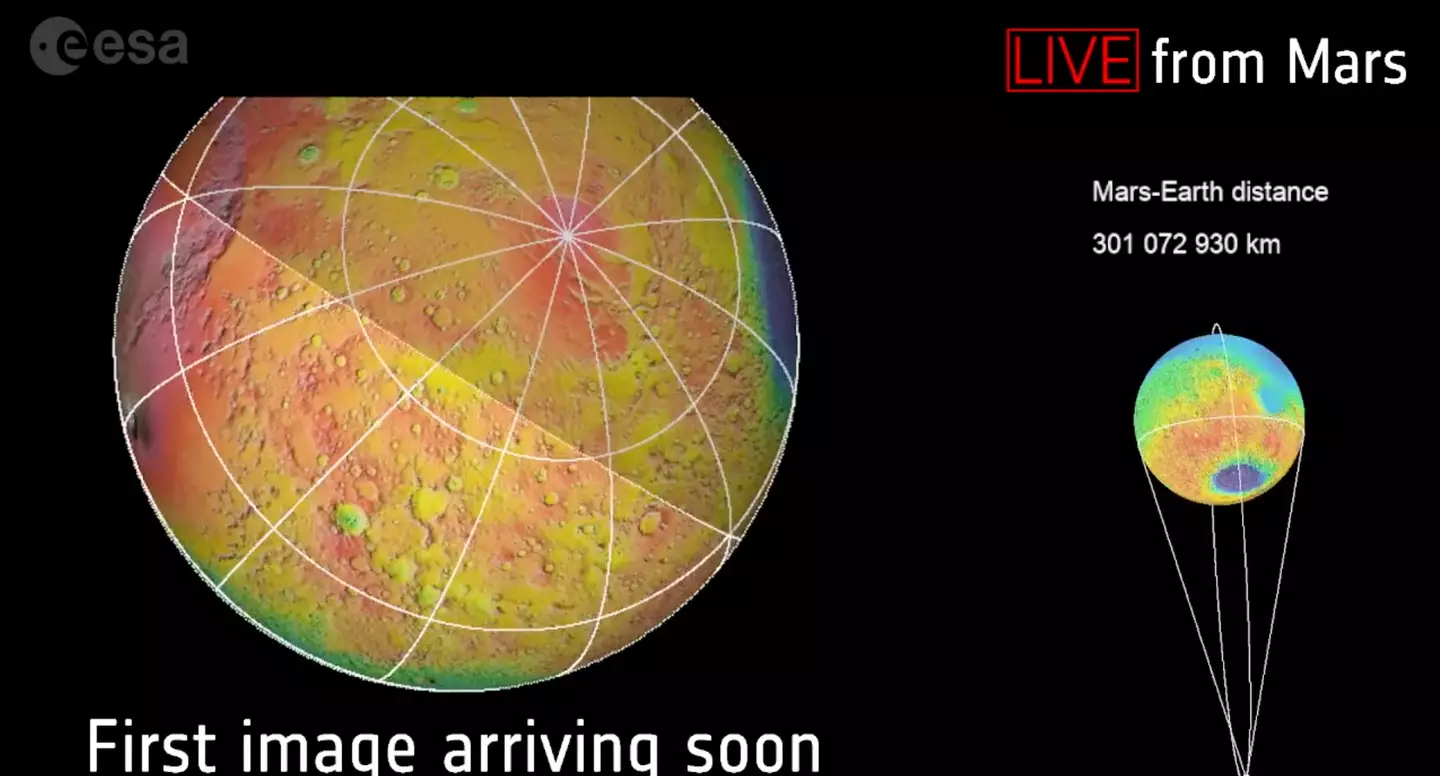
The first image showed Mars 16 minutes before the image arrived in the live stream. With each image, the perspective of Mars moved across the screen from the top right corner to the bottom left corner of the screen.
Advert
It was night time on the 'backside' of the planet during the stream, a scientist named Jorge explained during the stream.
"We're heading into the darkness," another expert commented, referring to the nighttime period on Mars.
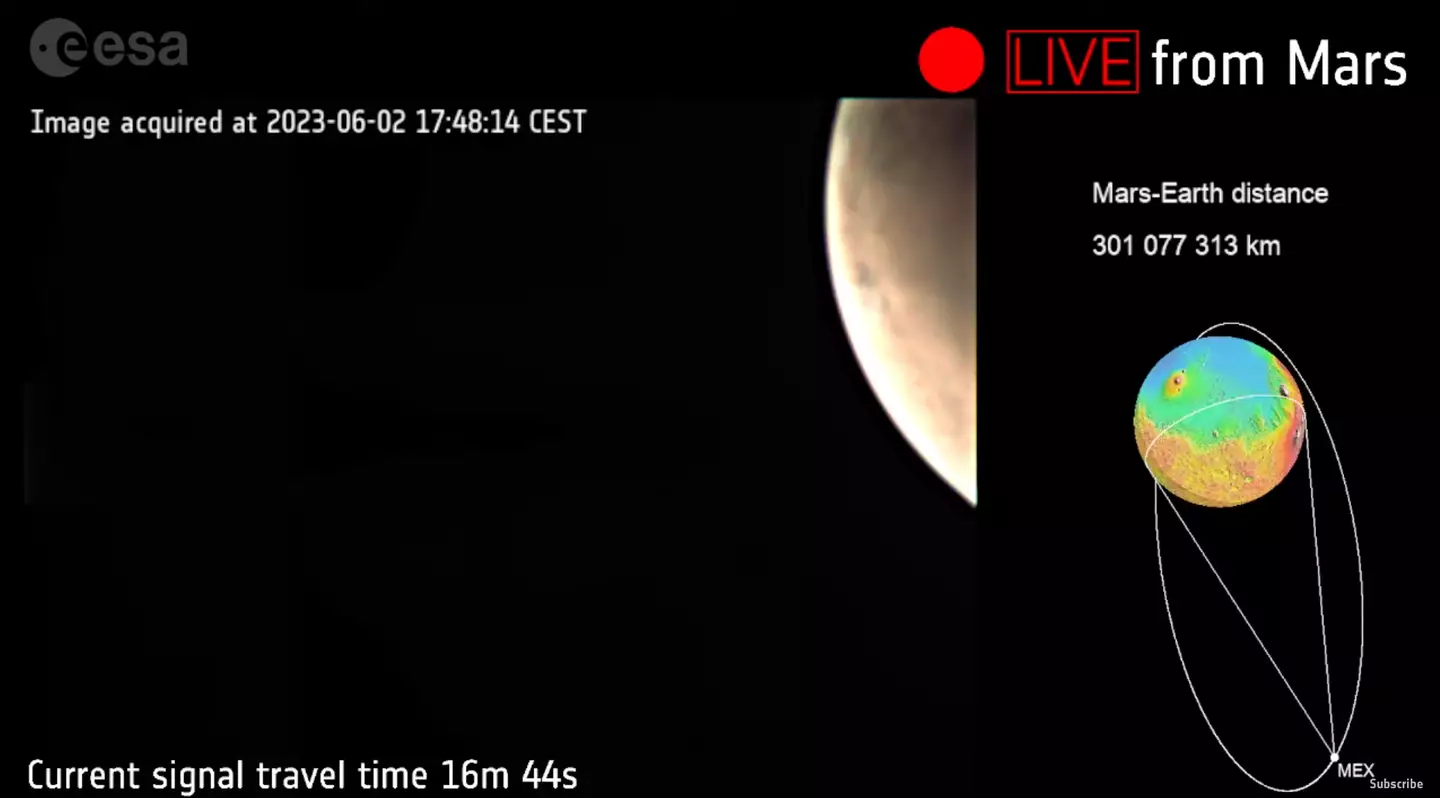
All eyes were peeled for the cheeky cameo from a Martian or any other alien life forms although viewers were warned beforehand that the camera quality would be quite low quality, but would improve after the second picture arrived.
Advert
Starting at 5pm BST today, new images were beamed down approximately every 50 seconds via the ESA YouTube channel. The first image arrived at around 5.06pm BST.
Hours before the live stream launched, fans from across the world took to the chat box to share their excitement about the historic moment.
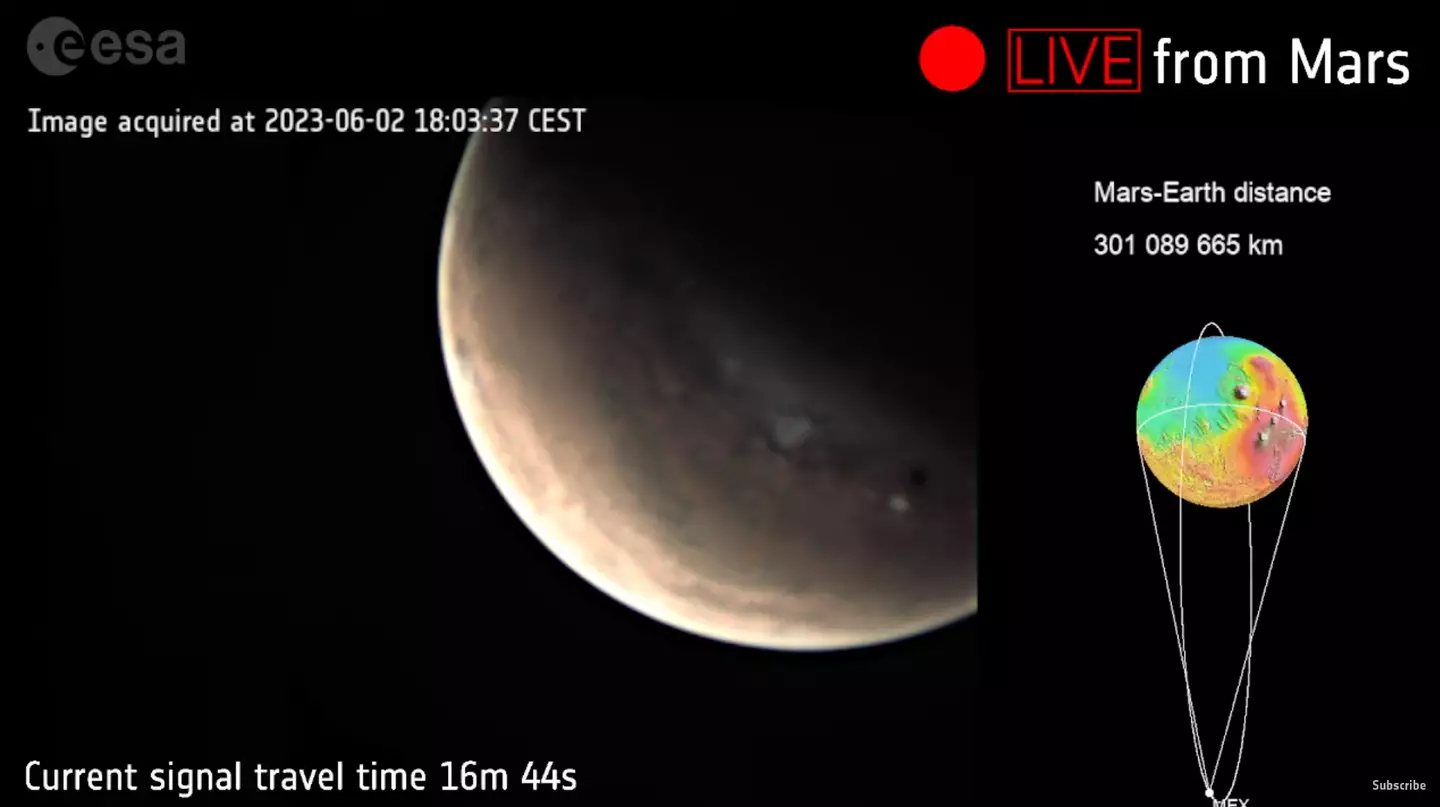
The ESA launched the live stream on Friday (2 June) to celebrate the 20th birthday of its Mars Express deep-space probe orbiting Mars.
Advert
Experts spent weeks developing all the tools to allow space fanatics here on Earth to stream footage from Mars via the probe’s camera for a full hour. The ‘old camera’ which was planned for ‘engineering purposes’, previously discovered the evolution of elongated cloud formations above the Arsia Mons, one of the most well-known volcanoes on Mars. The volcano reaches a height of 20km and the sighting of the clouds captured on the camera were incredibly rare.
James Godfrey, Spacecraft Operations Manager at ESA’s Mission Control Centre in Darmstadt, Germany, explained: “This is an old camera, originally planned for engineering purposes, at a distance of almost three million kilometres from Earth.
Godfrey was understandably unsure whether they’d be able to pull off today’s live stream. He said: “This hasn’t been tried before and to be honest, we’re not 100 per cent certain it’ll work.
“But I’m pretty optimistic. Normally, we see images from Mars and know that they were taken days before.
Advert
“I’m excited to see Mars as it is now – as close to a martian “now” as we can possibly get!’
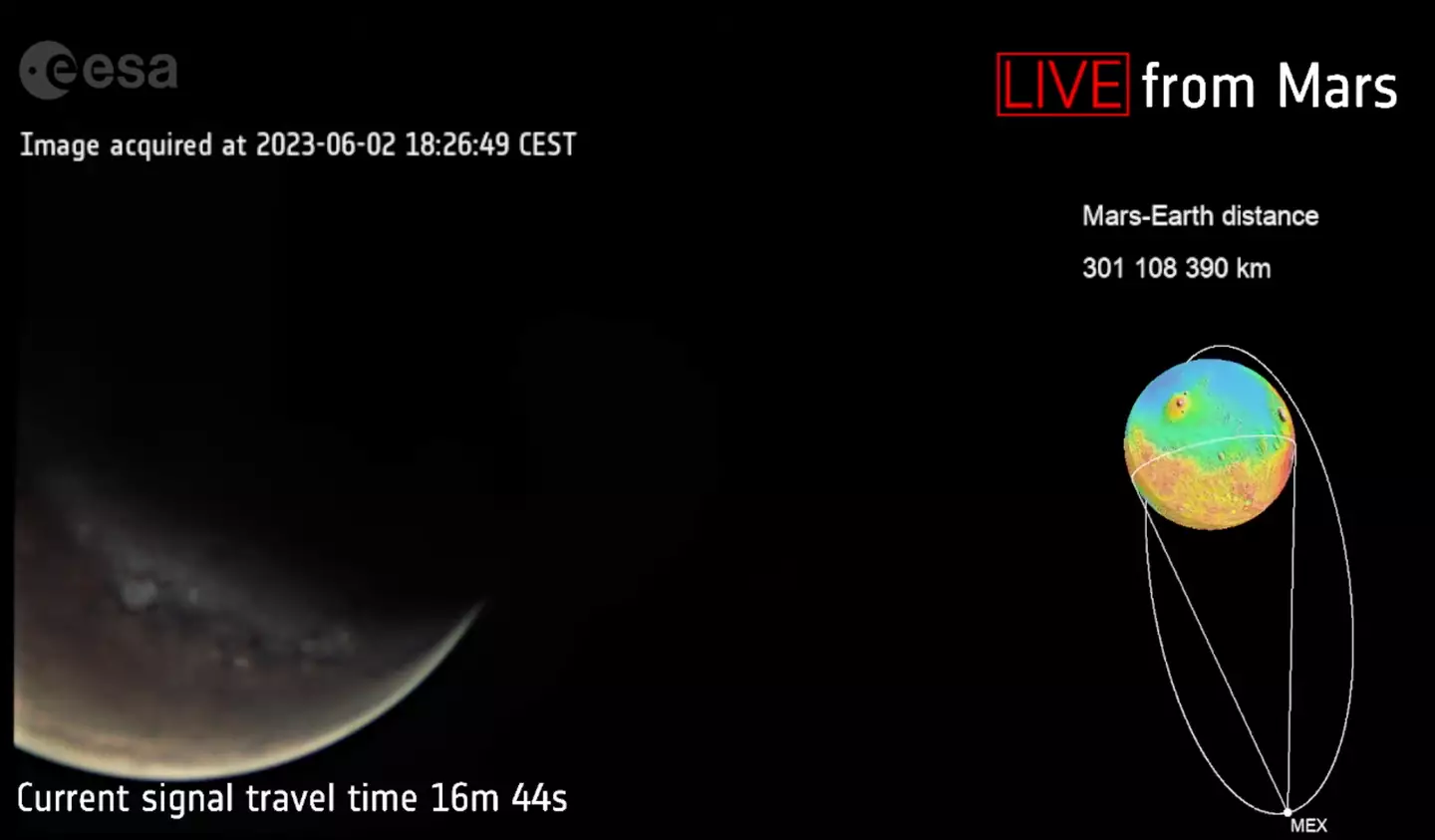
Because of all the literal space (get it?) between our home planet and Mars, there was a slight delay in the live transmission. The average distance to Mars from Earth is 140 million miles (225 million km) meaning that the delay between the images from Mars and their transmission to Earth was around 18 minutes.
“That’s 17 minutes for light to travel from Mars to Earth in their current configuration, and about one minute to pass through the wires and servers on the ground.” ESA said.
Advert
One day on Mars lasts for a little over 24 hours, and a year is 687 days on Earth. Mars is the fourth planet from the sun and has a dusty and desert-like atmosphere and experiences seasons and evidence it was even more active back in the day.
NASA hopes to send astronauts to Mars under its Artemis program in the 2030s, while Elon Musk previously shared plans to one-up NASA by sending humans to colonise Mars via his SpaceX company in 2029.
Featured Image Credit: YouTube/European Space Agency, ESA/Alamy/SPACE BY NASATopics: Space, Technology
